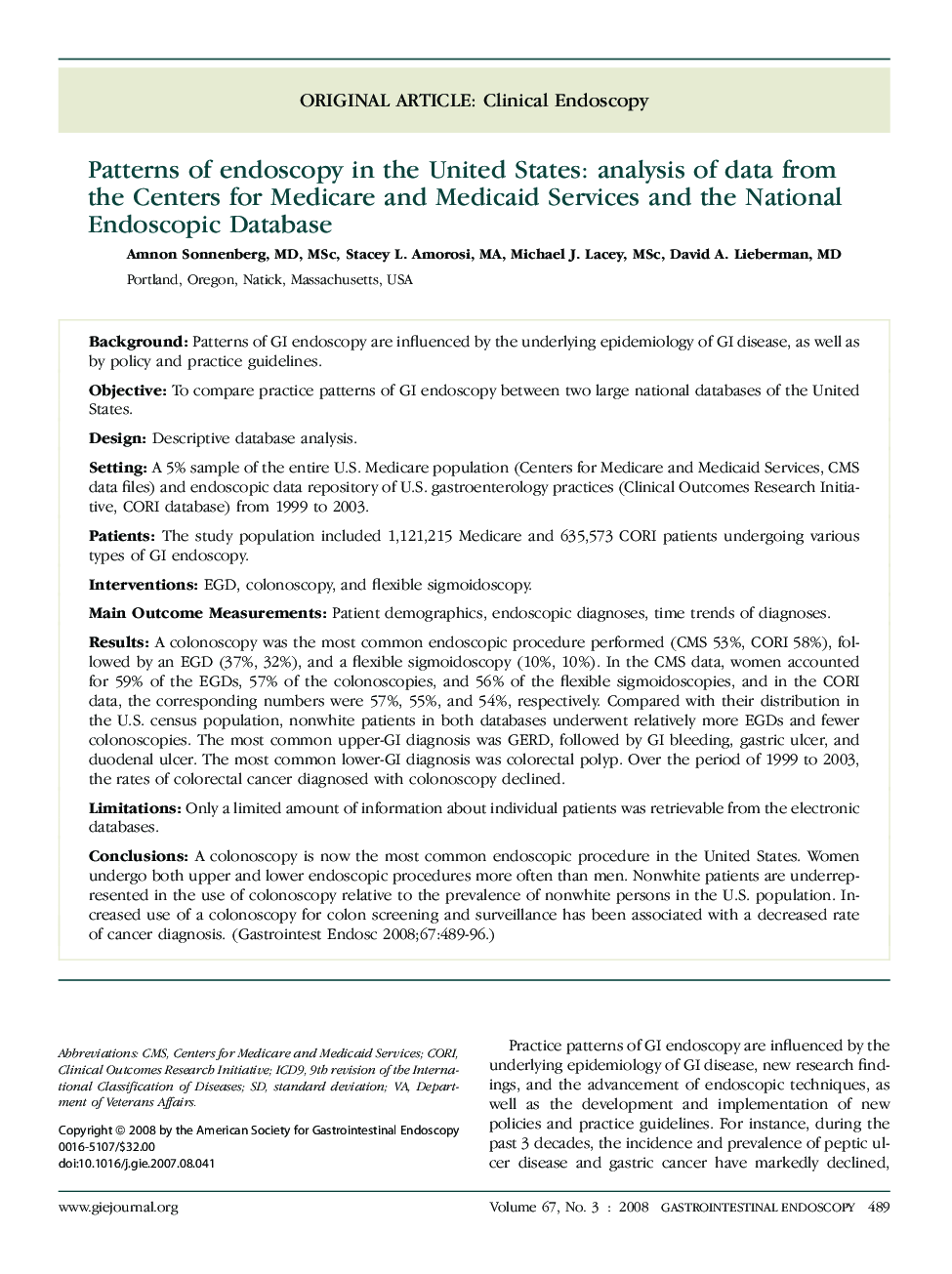| کد مقاله | کد نشریه | سال انتشار | مقاله انگلیسی | نسخه تمام متن |
|---|---|---|---|---|
| 3308783 | 1210408 | 2008 | 8 صفحه PDF | دانلود رایگان |

BackgroundPatterns of GI endoscopy are influenced by the underlying epidemiology of GI disease, as well as by policy and practice guidelines.ObjectiveTo compare practice patterns of GI endoscopy between two large national databases of the United States.DesignDescriptive database analysis.SettingA 5% sample of the entire U.S. Medicare population (Centers for Medicare and Medicaid Services, CMS data files) and endoscopic data repository of U.S. gastroenterology practices (Clinical Outcomes Research Initiative, CORI database) from 1999 to 2003.PatientsThe study population included 1,121,215 Medicare and 635,573 CORI patients undergoing various types of GI endoscopy.InterventionsEGD, colonoscopy, and flexible sigmoidoscopy.Main Outcome MeasurementsPatient demographics, endoscopic diagnoses, time trends of diagnoses.ResultsA colonoscopy was the most common endoscopic procedure performed (CMS 53%, CORI 58%), followed by an EGD (37%, 32%), and a flexible sigmoidoscopy (10%, 10%). In the CMS data, women accounted for 59% of the EGDs, 57% of the colonoscopies, and 56% of the flexible sigmoidoscopies, and in the CORI data, the corresponding numbers were 57%, 55%, and 54%, respectively. Compared with their distribution in the U.S. census population, nonwhite patients in both databases underwent relatively more EGDs and fewer colonoscopies. The most common upper-GI diagnosis was GERD, followed by GI bleeding, gastric ulcer, and duodenal ulcer. The most common lower-GI diagnosis was colorectal polyp. Over the period of 1999 to 2003, the rates of colorectal cancer diagnosed with colonoscopy declined.LimitationsOnly a limited amount of information about individual patients was retrievable from the electronic databases.ConclusionsA colonoscopy is now the most common endoscopic procedure in the United States. Women undergo both upper and lower endoscopic procedures more often than men. Nonwhite patients are underrepresented in the use of colonoscopy relative to the prevalence of nonwhite persons in the U.S. population. Increased use of a colonoscopy for colon screening and surveillance has been associated with a decreased rate of cancer diagnosis.
Journal: Gastrointestinal Endoscopy - Volume 67, Issue 3, March 2008, Pages 489–496